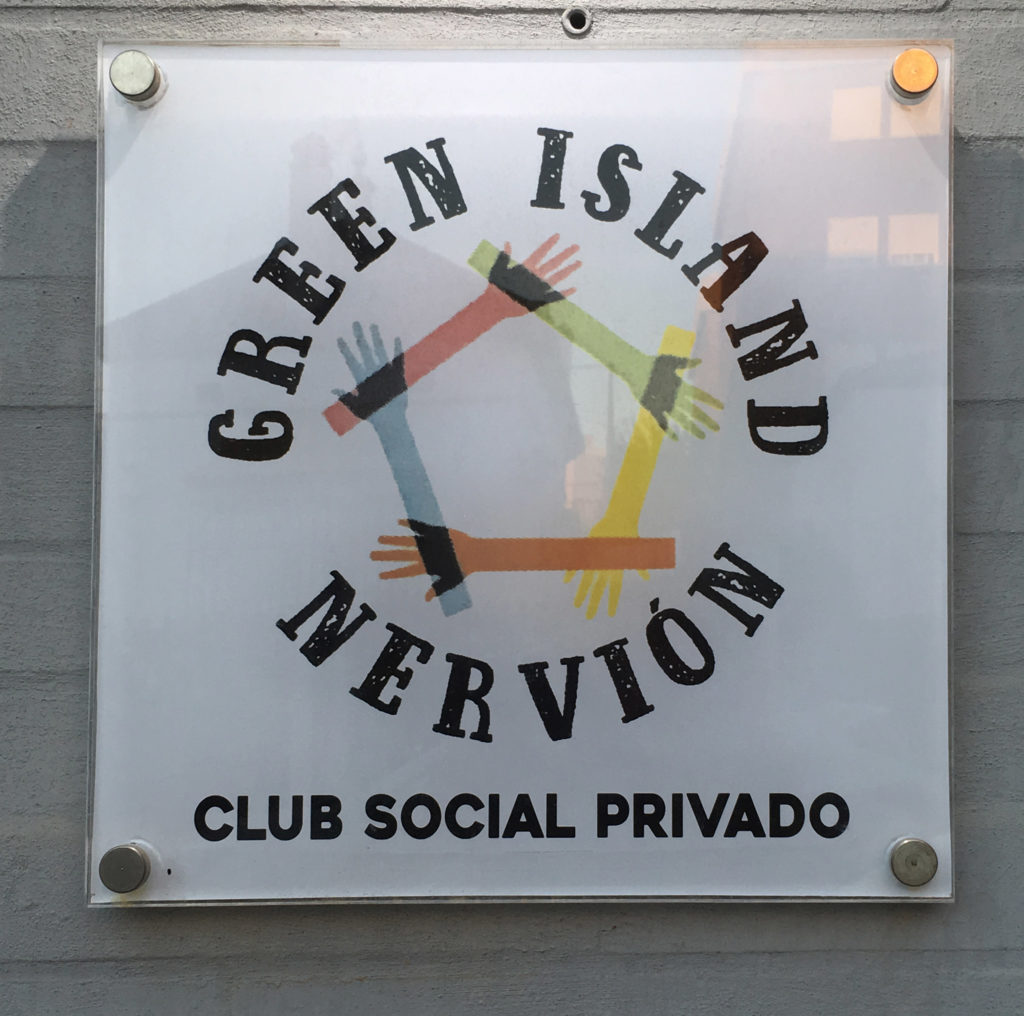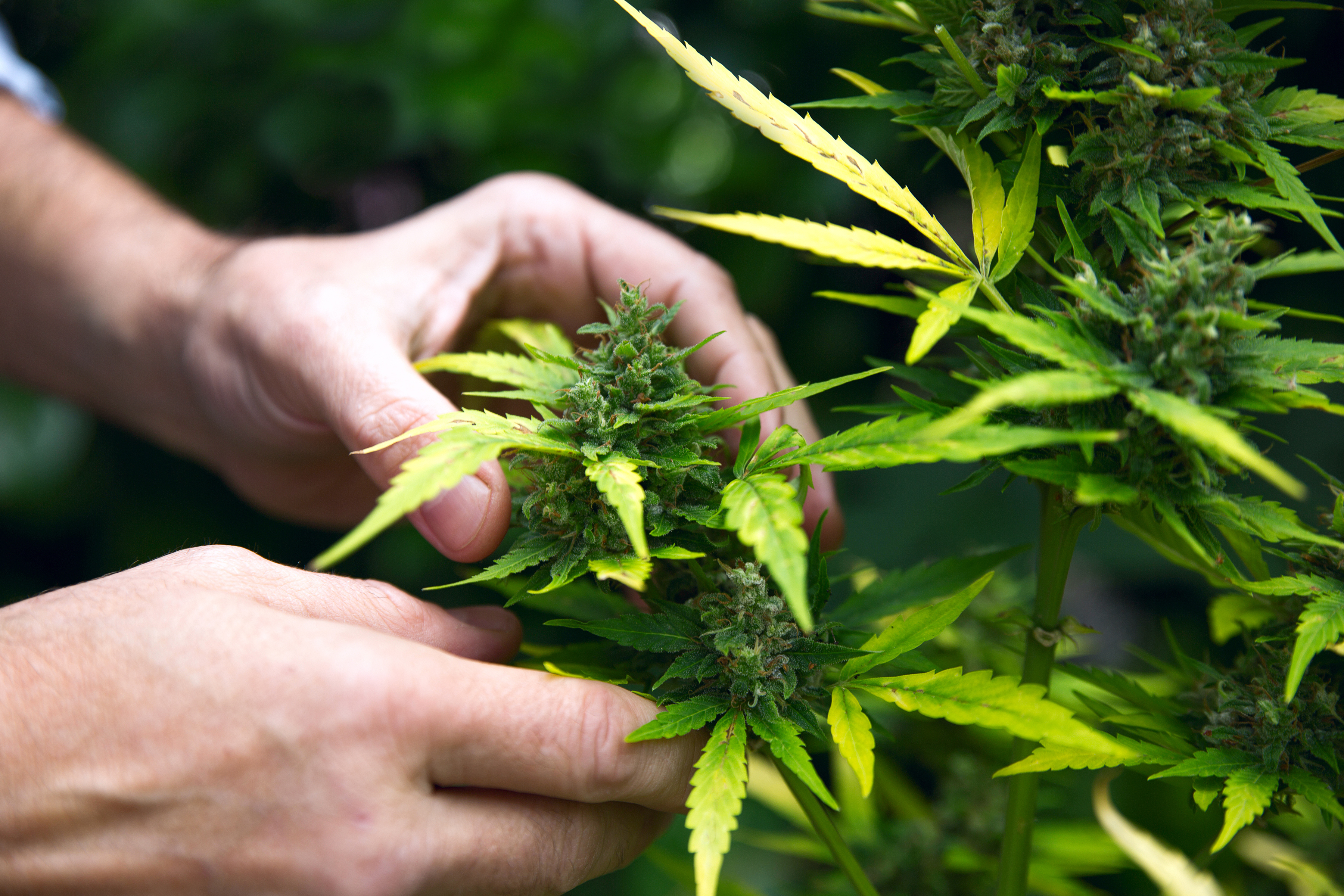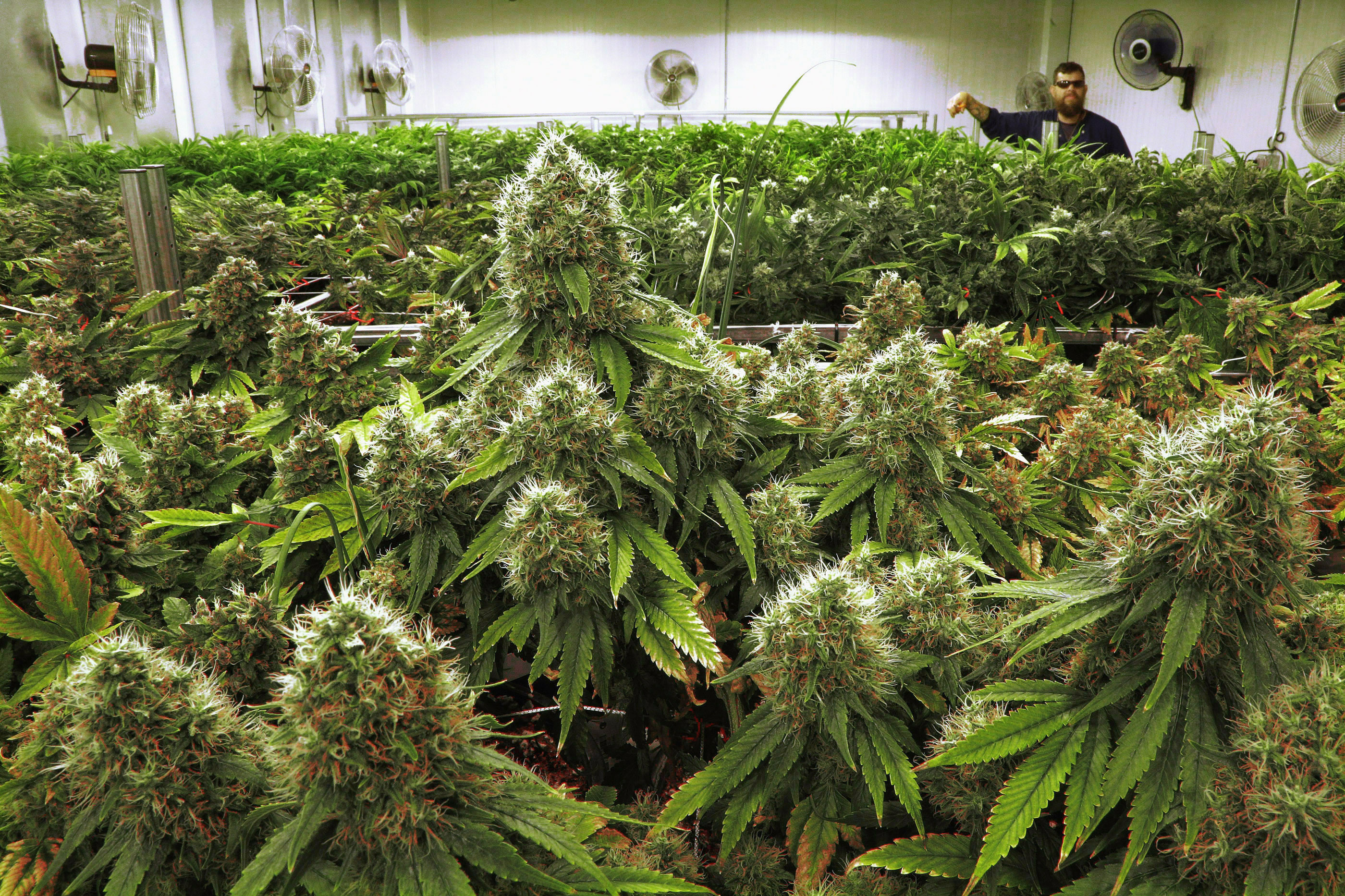In a small plaza behind the largest Gothic cathedral in the world, visitors rested on a stone bench beneath orange trees, relieved to be out of the hot Seville sun. Flamenco music and the aroma of fried anchovies wafted from the back screen door of a restaurant and mixed with the distinct smell of cannabis … or was it hashish?
Two young men smiled at a couple of curious Americans who edged closer and watched as they mixed a clumpy brownish substance with tobacco and rolled it into what looked like a preroll, except for the stains produced by the sticky resin from the polen colero on their fingers.
Enrique Naranjo, 21, explained that polen, a type of hashish, is manufactured on an industrial, scale in Morocco, albeit illegally.
Road to (and from) Morocco
In remote, mountainous regions of this North African country separated from Spain by the Mediterranean Sea by less than nine miles, or about 14 ½ kilometers, at its shortest distance, local syndicates plant massive crops of cannabis destined for hash production. After drying the stalks on rooftops, the whole plant gets put through sifters to extract the trichomes, which contain the active ingredient, and various heat treatments to bind them together into a sticky substance to create hash.
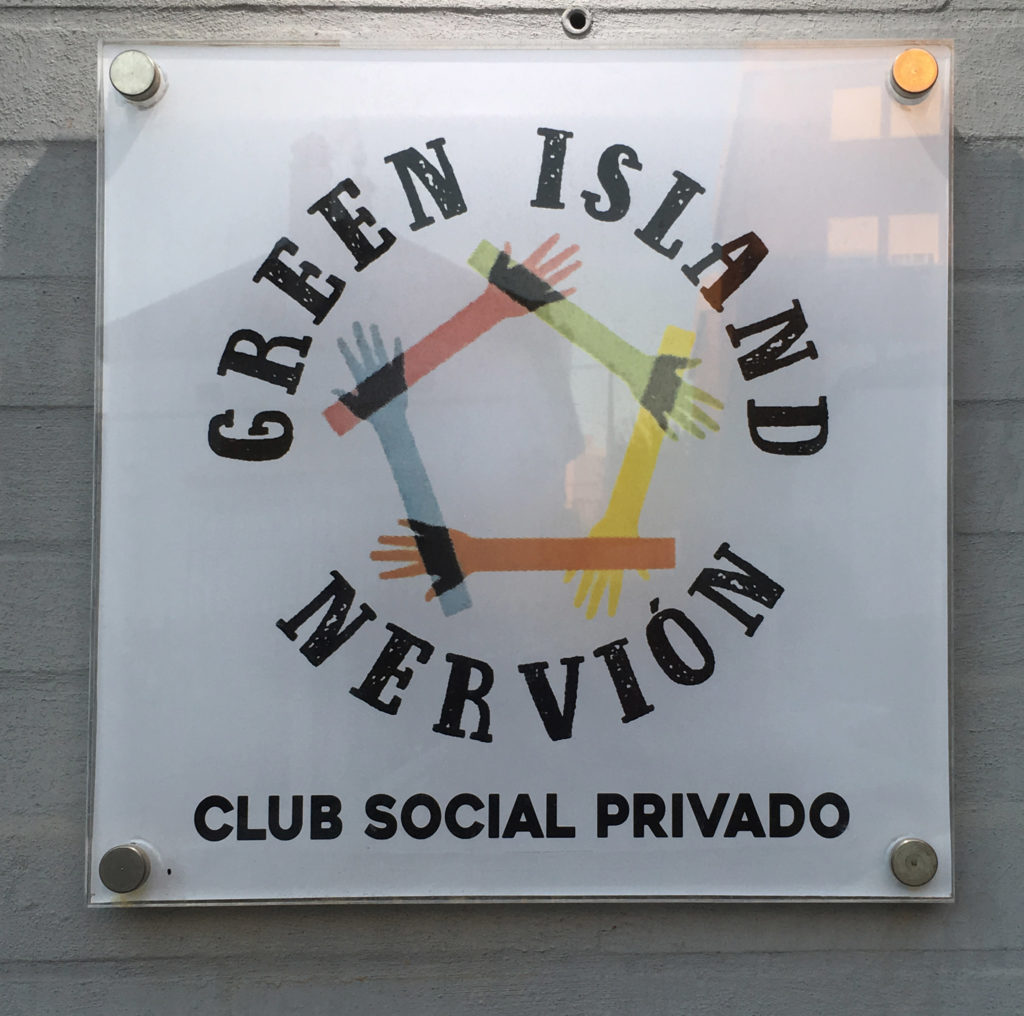
Green Island Nervión is a cannabis club in Spain. Consuming cannabis has become popular in the many social clubs in Spain, where authorities don’t crack down on private consumption. (Photo by Maureen Meehan)
Differences in the processing yield a diversity of products. Polen is a yellowish, crumbly hash that has undergone less heat treatment while darker-brown paki has been cured for a deeper flavor and manually kneaded, giving it a consistency like modeling clay. Neither polen nor paki burns on its own unless either is smoked in a hash pipe, which is uncommon in Spain, as are vape pens and the practice of dabbing.
As a result, Spaniards tend to amend their hash with tobacco.
“If you mix it with a nice tobacco, the flavor match can be incredible,” Naranjo said.
Aside from the unique strains and territory in which it’s grown, scientists discovered that Moroccan hash has a terpene (the compounds that give cannabis its smell and flavor) not found in any other cannabis products. Drying weed on the rooftop probably stems from convenience, but it just so happens that when ultraviolet light from the North African sun hits those buds, myrcene — the most abundant terpene in cannabis — reacts and creates what researchers have named “hashishene.” Their study was published in the Journal of Chromatography on Nov. 28, 2014, by Elsevier.
Cannabis is Legal, Sort Of
When asked about the legality of smoking in public, which he and his friend Martin Gomez were doing somewhat casually, Naranjo smiled broadly as he exhaled: “It’s illegal, but it’s complicated.”
With little to no regulation at the federal level, regional cannabis policies can be inconsistent and confusing among Spain’s 17 autonomous regions.
Though it is illegal to sell cannabis in Spain, the government does not prosecute personal and private consumption, which can be done legally in the 800-plus cannabis clubs throughout the country and in private homes.
Naranjo and Gomez, who work for a tour guide company, agreed that the police in Seville, the capital of Andalusia, aren’t overly concerned about marijuana smokers if they are discreet. “They have bigger fish to fry,” Naranjo said.
Drug Trafficking Remains a Problem
With Spain being the third most visited country in the world (after France and the United States) and having one of the lowest violent crime and homicide rates in the European Union, it’s worth asking: Who are these big fish that need frying?
“Drug traffickers,” said Juan Franco, the mayor of La Línea de la Concepción, a seaport town of 60,000 in southern Andalusia, one mile across a narrow bay from the British territory of Gibraltar and less than 10 miles from Morocco.
“Our geography has made us the gateway for illegal drugs into Europe … mostly hashish,” Franco told Marijuana.com. He then recounted a story, which he said, “changed La Línea within 48 hours.”
On Feb. 4, 2018, 20 masked men stormed the emergency room of La Línea’s hospital and grabbed an injured drug trafficker who’d been taken into custody following a car chase. The next morning a dozen suspected traffickers assaulted police officers who’d caught them unloading a hashish shipment off their “narco boats.” The following day a “group of 40 thugs” threatened the judge who was investigating the hospital raid, according to Franco.
Sounding exasperated, Franco asked out loud: “Have we become Colombia or Mexico?” The mayor confirmed the details of an investigation by the Spanish newspaper La Voz de Galicia, which reported that 280,000 tons of hashish per month reach La Línea’s shores from Morocco, the world’s largest producer of hashish and provider of 80 percent of the hash consumed annually in Europe.
“It used to be a cat-and-mouse game. Traffickers would dump their packages then flee once we spotted them,” Franco said. “Things changed in the past couple of years. There’s a gang, Los Castañitas, that controls most of the hashish, and they’re bold and violent.”
Spain’s politically decentralized system of government puts the onus of security on regional authorities. “But, we don’t have the resources here to stop the traffickers,” said Franco. “We’re overwhelmed.”
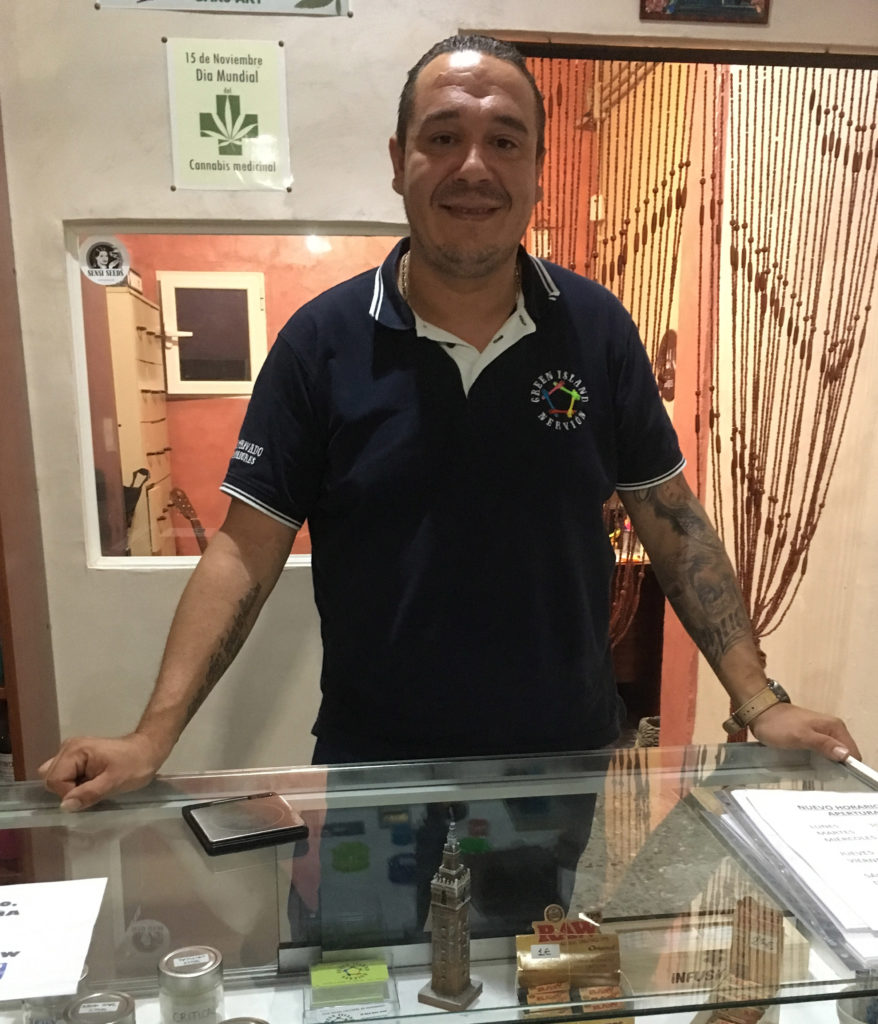
Ivan Ortega Ibañez co-founded the Green Island Nervión Cannabis Club in Seville, Spain. There are at least 800 such cannabis clubs in Spain, where the federal government delegated enforcement of drug laws to the autonomous regions, leaving a patchwork of inconsistent rules. (Photo by Maureen Meehan)
Ivan Ortega Ibañez, co-founder of Seville’s Green Island Nervión Cannabis Club, had a suggestion.
“We grow the best cannabis right here in Andalusia. We’ve got the perfect climate, conditions and more than enough land,” Ortega Ibañez told Marijuana.com. “If the government would allow us to legally grow here, the European demand for Moroccan hash would be transformed into domestically grown cannabis.”
Green Island’s prices are consistent with the rest of Spain: €6 per gram, or $6.88 U.S. dollars at the exchange rate on Oct. 23, 2018. Members can purchase up to 720 grams, or 25.4 ounces, of cannabis per year, Ortega Ibañez explained.
Ortega Ibañez, 38, who has grown cannabis for the past decade, said the transition to cannabis has already started. “The popularity of flower has increased in the past year but we’re still competing with Moroccan speedboats. We’ve got the same powerful sun and can make our own hash if we want, and guarantee that it’s organic.
“But we need the Spanish government to get on board and realize what a gold mine we’re sitting on.”
Banner Caption: Martin Gomez, left, and Enrique Naranjo, friends who work for a tour company in Seville, Spain, enjoy joints behind the home of Saint Ángela de la Cruz Guerrero Gonzalez (1846-1932), who founded the order Sisters of the Cross and known as the “mother of the poor” and “Ángela of the Cross.” She was canonized in 2003. Naranjo wasn’t concerned about whether smoking marijuana was legal. “It’s illegal, but it’s complicated,” he said. (Photo by Maureen Meehan)


